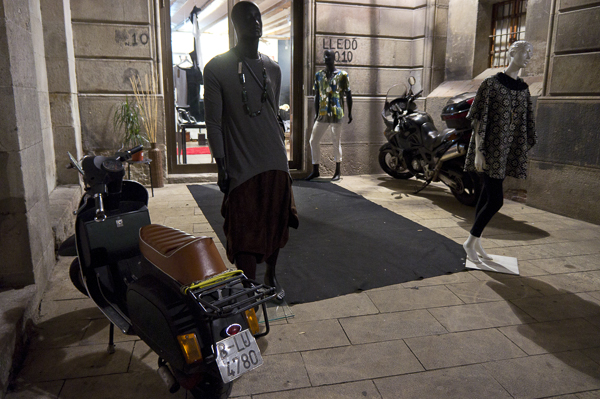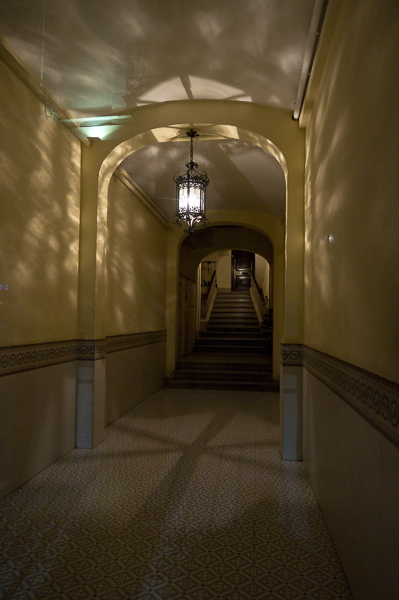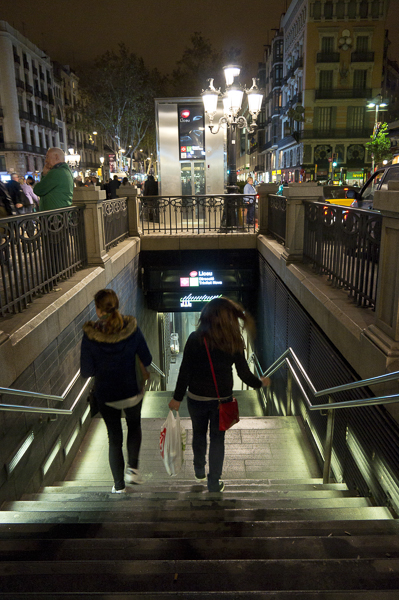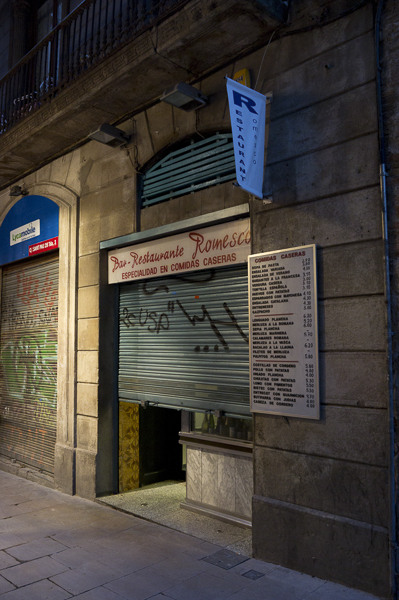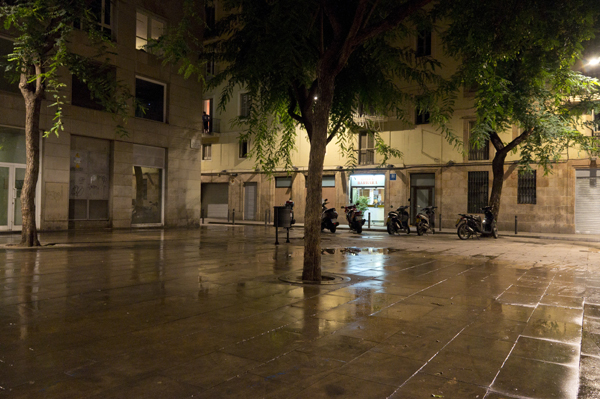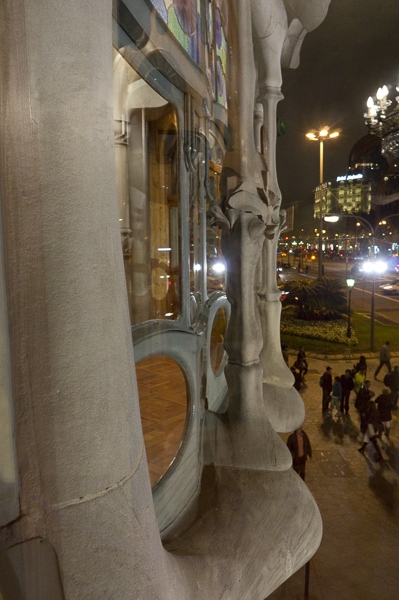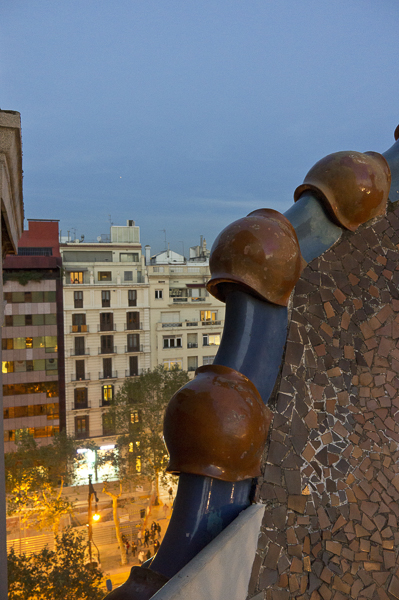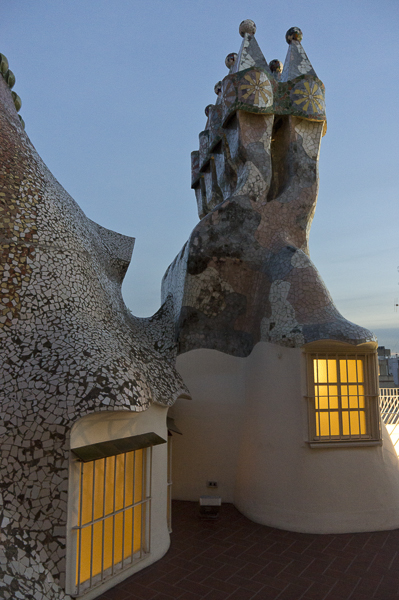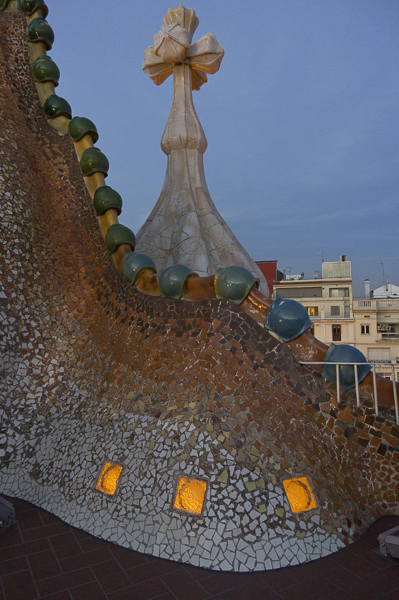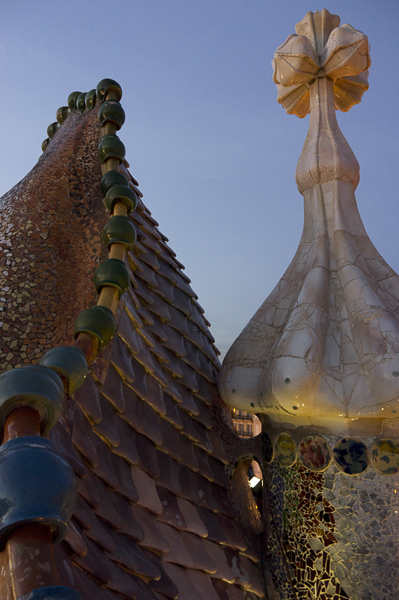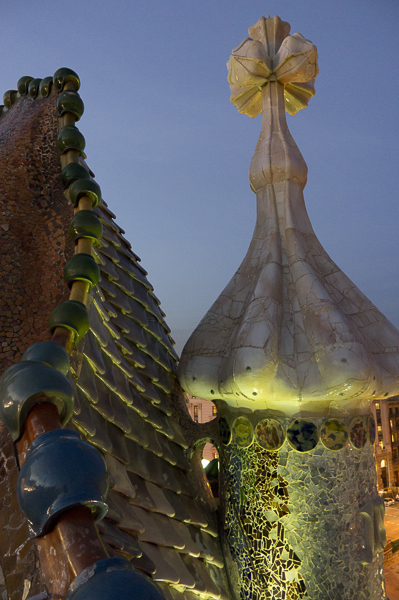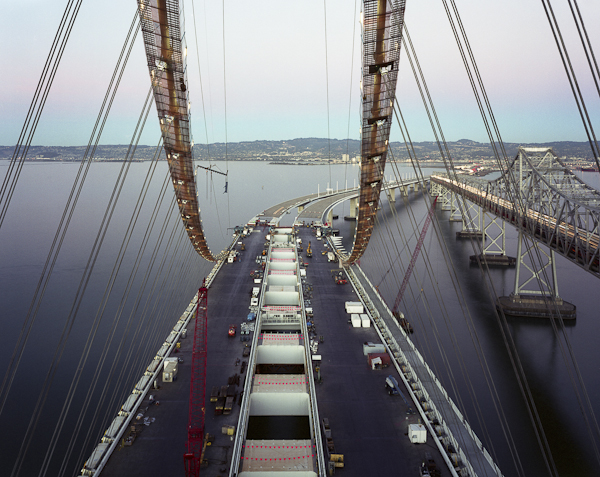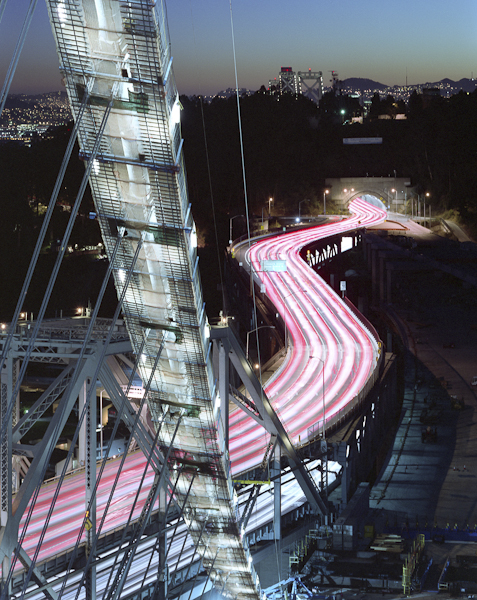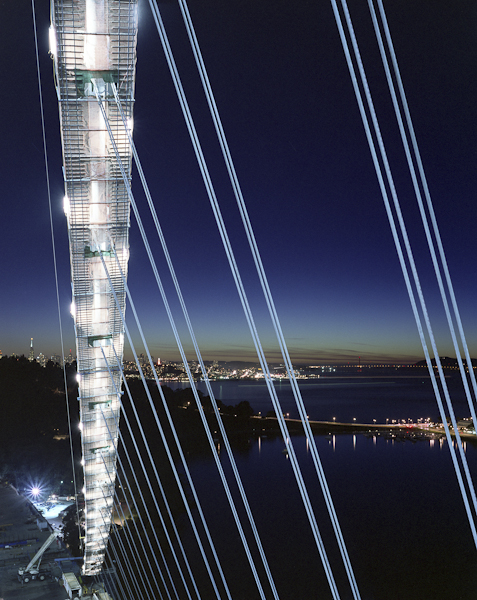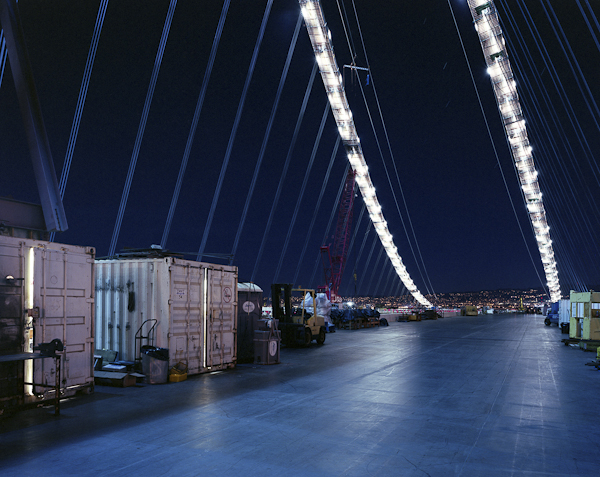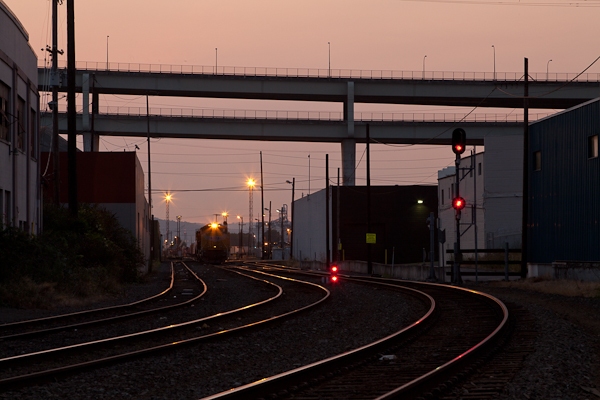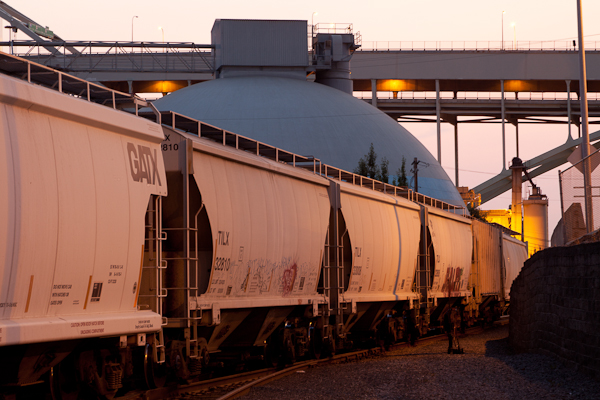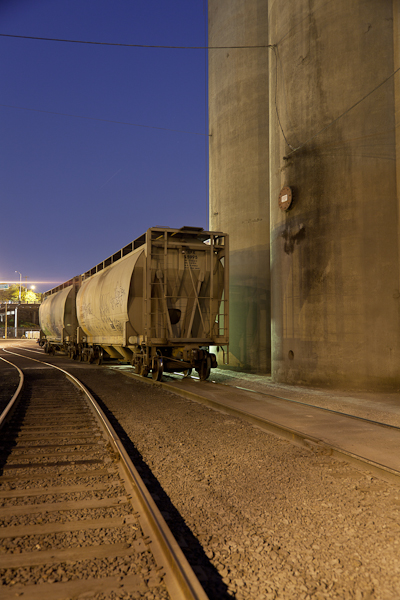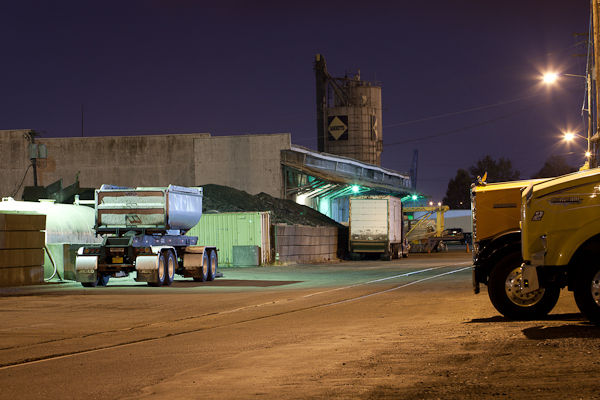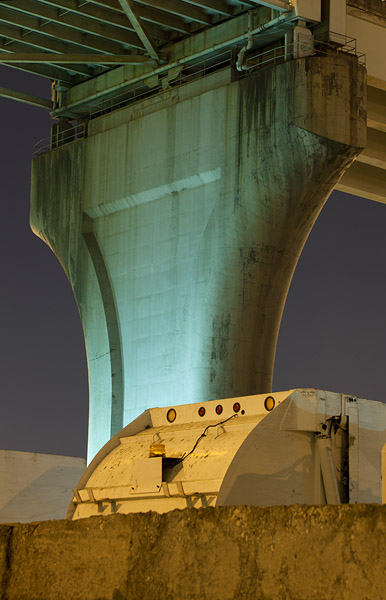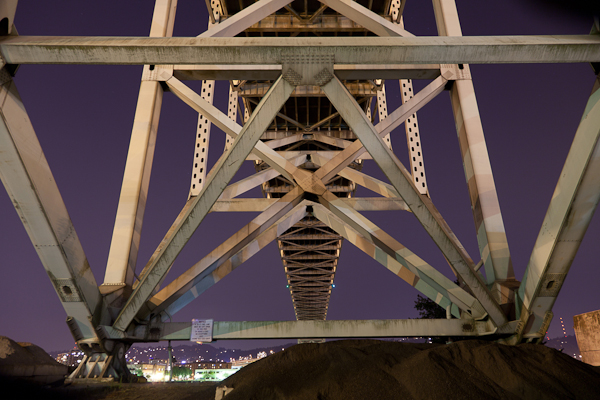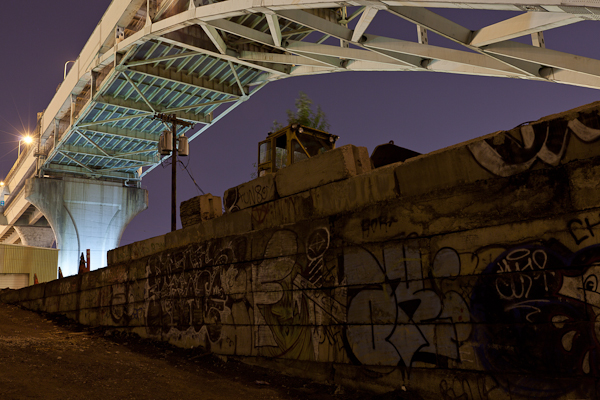First, I want to thank all of you who came to my show opening last week on Loss: The LA Auto Dealership series. There was a great turnout. The show will be up until April 30th, the closing day of all the MOPLA shows.
Many of you know that I enjoy on-going projects. They let you experience the subjects in different light, time of day and in different seasons. The same shot done 6 months later frequently offers a totally different view.
Another project I’ve been working on is photographing on I-5, the major artery between Los Angeles and the San Francisco Bay Area. I’ve been driving it for 40 years, having lived at both ends, several times. Most find this highway boring, but I find that after shooting it for a year now, both day and night, I find it has its own personality. Like many of my other major personal projects, I’m shooting it in 4×5 film.
I’ve shot over 150 views so far, and have recently edited them down to the top 50 that tell a story. Here are a few from the series.
 Twilight is my favorite time of day to shoot, as the muted tones soften the image. Here a semi-truck is traveling north-bound with the “civil twilight” light behind it. The multitude of wildflowers, tumbleweed and cactus in the foreground is typical of Central California in the spring.
Twilight is my favorite time of day to shoot, as the muted tones soften the image. Here a semi-truck is traveling north-bound with the “civil twilight” light behind it. The multitude of wildflowers, tumbleweed and cactus in the foreground is typical of Central California in the spring.
.
 The California Aqueduct is an important part of the infrastructure of the state. It criss-crosses I-5 from Sacramento to LA. This shot is taken from a small bridge on a farm road, with I-5 in the background.
The California Aqueduct is an important part of the infrastructure of the state. It criss-crosses I-5 from Sacramento to LA. This shot is taken from a small bridge on a farm road, with I-5 in the background.
.
 The long distance trucks are the real king of I-5, moving goods between the major cities. This shot was made at the Grapevine Weigh Station, with the sun just seconds from setting. I waited for a truck that had color to contrast the dark blue heavy sky, but also had no blatant advertising on the trailer. I chose a shutter speed just slow enough to show movement, but keeping the truck recognizable. The CHP came out and rousted me just after I got this shot.
The long distance trucks are the real king of I-5, moving goods between the major cities. This shot was made at the Grapevine Weigh Station, with the sun just seconds from setting. I waited for a truck that had color to contrast the dark blue heavy sky, but also had no blatant advertising on the trailer. I chose a shutter speed just slow enough to show movement, but keeping the truck recognizable. The CHP came out and rousted me just after I got this shot.
.
 The infrequent “rest areas” with their fast food and motel are used by all at one point or another. This confusing jumble of signage and the trucker parked for the night tells the story of being on the road. It was a heavy overcast evening for this twilight shot.
The infrequent “rest areas” with their fast food and motel are used by all at one point or another. This confusing jumble of signage and the trucker parked for the night tells the story of being on the road. It was a heavy overcast evening for this twilight shot.
.
 Many people outside of California don’t realize that agriculture is the largest business in the state. The San Joaquin Valley is the single largest agricultural area. Here we can see how the motel on the interstate mixes with the farms. This was also shot in the last seconds of sun, with its pleasing warm tones. It was very windy and I had to shelter the camera from the 20mph winds with the dark cloth and my body (note the leaning palm trees).
Many people outside of California don’t realize that agriculture is the largest business in the state. The San Joaquin Valley is the single largest agricultural area. Here we can see how the motel on the interstate mixes with the farms. This was also shot in the last seconds of sun, with its pleasing warm tones. It was very windy and I had to shelter the camera from the 20mph winds with the dark cloth and my body (note the leaning palm trees).
.
 Sometimes, the simple shot is the best one. I walked around this fast-food restaurant parking lot for several minutes to find what I thought was the best single shot. That is one of the disciplines of the view camera, to slow down and really look and the subject, find the right place for the camera and then choose the lens to capture the field of view you want. I then waited another few minutes until the light balance from sunset matched the mercury vapor light reflecting off the asphalt. If you look closely, you can actually see the purple sky reflected off the asphalt, lower-center. That’s the headlights from I-5 in the background. Note the headlights of a car coming over the overpass, center-right.
Sometimes, the simple shot is the best one. I walked around this fast-food restaurant parking lot for several minutes to find what I thought was the best single shot. That is one of the disciplines of the view camera, to slow down and really look and the subject, find the right place for the camera and then choose the lens to capture the field of view you want. I then waited another few minutes until the light balance from sunset matched the mercury vapor light reflecting off the asphalt. If you look closely, you can actually see the purple sky reflected off the asphalt, lower-center. That’s the headlights from I-5 in the background. Note the headlights of a car coming over the overpass, center-right.
I’m continuing with this series, studying the different exits, making notes for “next time” and what time of day is best. This blog is listed as a “twilight and night photography blog” but I’m planning to expand it to include day shots for series like this one. I might be known for my twilight and night work, but I also don’t want the blog to be too restricting. Day shots also tell the story.
See you on the road…






